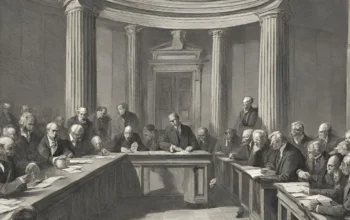Law Literacy– This article discusses a complete and up-to-date guide on filing for tax restitution for individual taxpayers at the Directorate General of Taxes (DGT). A detailed explanation of the procedures, requirements, and documents required for tax restitution are outlined, providing insight into the taxpayer’s right to apply for a refund of tax overpayments. In addition, this article also explores the stages of the restitution process and the appeal mechanism in the event of a rejection of the restitution request. With actual data and credible references, this article is a valuable source of information for taxpayers who plan to apply for restitution or understand more about the latest tax policies.
Introduction
Legal provisions related to the submission of restitution by individual taxpayers at the Directorate General of Taxes aim to provide clear guidelines and procedures for submitting requests for restitution. Restitution is the return or reimbursement of tax payments that taxpayers have made in the event of overpayment or underpayment. This is important in maintaining tax fairness and justice for taxpayers. This provision is fully explained regarding the definition of restitution, the purpose of restitution, and the scope of restitution that applies in submissions by individual taxpayers at the Directorate General of Taxes.
In Article 17 of Law Number 6 of 1983 concerning General Provisions and Procedures for Taxation, as amended several times by Law Number 28 of 2007 (KUP Law), tax restitution is an application for the return of the amount of excess tax the taxpayer has paid to the state. This right arises if there is an overpayment of tax as stated in the Annual Tax Return (SPT) or if there is a recovery or deduction error that results in an overpayment of tax. This means that the DGT will return the tax paid by the taxpayer. For information, the realization of tax refunds throughout 2021 reached IDR 196.11 trillion.
Definition of Tax Restitution
Tax restitution is an application for a tax refund submitted by the taxpayer to the state. The term “tax refund” is regulated in the Law on General Regulations and Tax Procedures (UU KUP). Tax restitution occurs when a taxpayer pays more than the amount that should according to tax provisions. The state has the obligation to return the overpayment to the taxpayer after a series of audit processes by the Directorate General of Taxes (DGT). Tax restitution is the government’s effort to create a healthy tax system and as a guarantee of trust given by the government to taxpayers. Tax restitution also aims to protect taxpayer rights.
Requirements for Filing Restitution for Individual Taxpayers
Individual Taxpayer restitution submission applies if:
- Tax overpayments below or equal to IDR100 million where individual taxpayers who have tax overpayments below or equal to IDR100 million are entitled to accelerated restitution;
- On-time in submitting tax returns where taxpayers must submit notification letters (SPT) on time in accordance with applicable regulations;
- Not having tax arrears where taxpayers may not have tax arrears for all types of taxes and
- Conducting financial statement audits where taxpayers must submit financial reports in a tax year that a public accountant or authorized institution has audited;
Documents Required for Filing Restitution
To apply for restitution, there are several documents that need to be attached. Here are some of the documents that are generally requested in the restitution application:
- Copy of excise and tax customs deposit letter or equivalent to excise and tax customs deposit letter;
- Copy of SPTNP (Surat Penetapan Tarif dan Nilai Pabean);
- Copy of SPKTNP (Letter of Re-determination of Customs Tariff and/or Value);
- Copy of SPKPBM (Notice of Underpayment of Import Duty, Excise, Administrative Penalty, Interest, and Tax in the context of import);
- Copy of SPP (Customs Determination Letter);
- A document containing import cancellation;
- Copy of objection decision; and
- Court decision.
Time Period
Excess tax payment after being calculated with tax debt is refunded within a maximum period of 1 (one) month from, among others:
- The acceptance of the application for refund of overpayment due to the issuance of a Tax Assessment Letter of Overpayment (SKPLB) based on the audit process on the Tax Return submitted by the Taxpayer stating underpayment, nil, or overpayment that is not accompanied by an application for refund of tax overpayment;
- The issuance of SKPLB for the process of refunding excess tax that should not be payable or the tax refund process that is not submitted by taxpayers who meet certain requirements or certain criteria;
- A decision Letter of Preliminary Refund of Excess Tax is issued;
- Objection Decision Letter is issued;
- The Appeal Decision or Judgment of Judicial Review is received by the Directorate General of Taxes office authorized to implement the Appeal Decision or Judgment of Judicial Review.
- The Directorate General of Taxes office is authorized to implement the Appeal Decision or Reconsideration Decision;
- Correction Decision Letter is issued;
- Letter of Administrative Sanction Reduction or Letter of Administrative Sanction Elimination is issued;
- SKP Reduction Decree or SKP Cancellation Decree is issued; or
- Letter of STP Reduction or Letter of STP Cancellation is issued.
Denial and Appeal of Restitution Application
Filing a tax refund is an effort by the taxpayer to pay the excess tax payment or the amount of tax owed in accordance with the applicable tax laws and regulations. However, tax refund requests can sometimes be rejected. In this case, the taxpayer can appeal the rejection decision. A tax refund request may be rejected if the taxpayer submits an incorrect or incomplete tax refund request. For example, if the attached documents are incomplete or do not meet the stipulated requirements, rejection is also possible if there is an error in the calculation or application of tax regulations contained in the taxation letter.
If a tax refund application is rejected, the taxpayer can appeal the rejection decision. An appeal is a legal remedy that a taxpayer or taxpayer can take against a decision that can be appealed based on applicable tax laws and regulations. The requirements for filing an appeal include:
- Taxpayers may file an appeal only to the tax judicial body against the Objection Decision Letter;
- The application shall be submitted in writing in Indonesian language with clear reasons at the latest 3 (three) months after the Objection Decision Letter is received and attached with a copy of the Objection Decision Letter and
- Against 1 (one) Decision, 1 (one) Appeal Letter shall be submitted.
Appellants include:
- The taxpayer may file appeals, his/her heirs, an administrator, or his/her attorney;
- If, during the Appeal process, the Appellant dies, the Appeal may be continued by his/her heirs, the legal representative of his/her heirs, or his/her guardian if the Appellant is bankrupt and
- If, during the appeal process, the appellant conducts a merger, consolidation, business split/business expansion, or liquidation, the appeal may be continued by the party that receives liability due to the merger, consolidation, business split/business expansion, or liquidation.
References
- Rani Maulida, Restitusi Pajak: Pengertian, Tujuan dan Syarat Percepatan Restitusi Pajak, https://www.online-pajak.com/tentang-pajak/restitusi-pajak, diakses di Pematang Siantar 10 Mei 2024, Jam 16.40
- Fitriya, Restitusi Pajak : Contoh, Syarat, Cara Restitusi PPN dan PPh, https://www.online-pajak.com/tentang-pajak/restitusi-pajak, diakses di Pematang Siantar 10 Mei 2024, Jam 17.00
- Djp, Restitusi, https://www.pajak.go.id/en/node/34994, diakses di Pematang Siantar 10 Mei 2024, Jam 17.04
- Djp, Banding, https://pajak.go.id/en/node/34972, diakses di Pematang Siantar 10 Mei 2024, Jam 17.18







